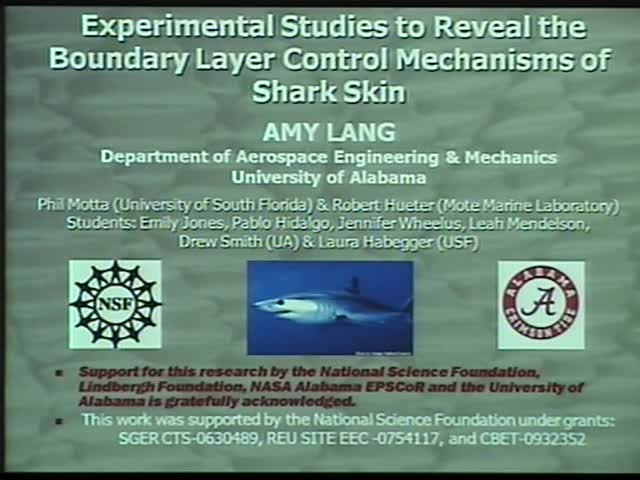Experimental studies to reveal the boundary layer control mechanisms of shark skin
Presenter
June 3, 2010
Abstract
This experimental work is investigating a new and unique passive boundary-layer separation control methodology derived from shark skin, functioning at the micro-scale level. The skin and denticles (scales) of sharks represent over 400 million years of natural selection for swimming efficiency. Evolutionary adaptations in the morphological structure of the shark skin, to develop unique boundary layer control (BLC) mechanisms, stem from the ensuing decrease in drag, probable increase in fin performance (e.g. thrust production) and enhanced turning agility for fast-swimming sharks. Shark denticles have been documented to be capable of bristling. A bristled microgeometry mimicking shark skin results in the formation of a system of interlocking embedded cavity vortices. Three mechanisms have been hypothesized which lead to boundary layer control via deterrence of separation over the shark skin. The first mechanism is the formation of embedded micro-vortices that increase momentum in the very near-wall region due to the resulting partial slip condition. The second mechanism is that the preferential flow direction inherent in the surface geometry inhibits global flow reversal and leads to passive actuation via denticle bristling. The third mechanism involves turbulence augmentation, or an additional energizing of flow, in the near-wall region and cavities, leading to higher partial slip velocities. The study involves engineers, working together with biologists Dr. Phil Motta (University of South Florida) and Dr. Robert Hueter (Mote Marine Laboratory), to fully comprehend the morphological bristling mechanism of shark denticles. Initial results for scale angles and morphology on hammerhead and shortfin mako sharks along with flow measurements over shark skin models embedded in a turbulent boundary layer will be presented.
